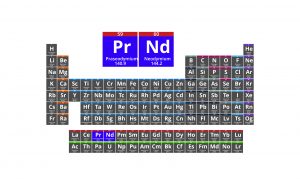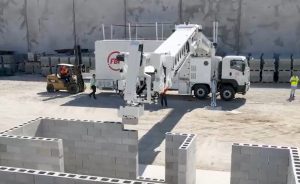Growth focused Western Australian nickel company St George Mining (ASX: SGQ) has released its quarterly activities report for the period ending 30 June 2020.
MT ALEXANDER PROJECT:
-
Major drilling programme commenced with two diamond rigs and one reverse circulation (RC) rig deployed at Mt Alexander.
-
Further magnetotelluric (MT) and audio-magnetotelluric (AMT) surveys completed across the Cathedrals Belt with additional prospective conductive features identified below the current extent of drilling.
-
Multiple new drill targets for nickel-copper sulphides, including deep MT/AMT conductive targets down-plunge of known shallow deposits.
-
Resource drilling completed at the shallow, high-grade Stricklands deposit to support a JORC compliant resource estimate and scoping study.
PATERSON PROJECT:
-
Gravity survey completed at Paterson Project tenement E45/5226 with targets being generated ahead of an inaugural drill programme.
-
Second Paterson Project tenement E45/5422 granted to St George on 10 July 2020.
CORPORATE:
-
$7.2 million of new funding raised through a $3.6 million Share Purchase Plan and $3.6 million private placement.
-
Funding of $150,000 secured under the Western Australian Government’s Exploration Incentive Scheme (EIS), to be applied towards deep drilling at the Cathedrals Belt.
MT ALEXANDER PROJECT:
Major drill programme underway:
A multi-rig drill programme commenced at Mt Alexander in late May 2020 and continues into this quarter. One RC rig and two diamond rigs have been deployed in this programme to date.
RC drilling has focused on the resource drill-out at the shallow Stricklands deposit and testing of shallow nickel-copper sulphide targets at the Fish Hook Prospect.
Diamond drilling was initially used to complete metallurgical drill holes at Stricklands and is now focused on testing deep conductive targets that are prospective for mafic-ultramafic intrusions, which may host new nickel sulphide deposits.
Breakthrough Results from Magnetotelluric (MT) and Audio-magnetotelluric (AMT) Surveys:
Further MT/AMT surveys were completed across the Cathedrals Belt during the quarter and continued to successfully generate new targets for potential nickel-copper sulphide deposits at depth.
Electromagnetic (EM) surveys have been used extensively across the Cathedrals Belt to identify shallow nickel-copper sulphide mineralisation. However, these surface EM surveys may not be able to see mineralisation at depths of more than 250m below surface.
The deeper penetrating MT/AMT surveys have mapped an extensive and deeper structural framework to more than 1.5km below surface. This kind of deep, mantle-tapping structural framework is typical of large nickel sulphide systems.
The initial MT/AMT surveys carried out in March 2020 included an east-west oriented survey line that extended for 10km from the West End Prospect in the west to the Bullets Prospect in the east.
In May 2020, additional MT/AMT surveys were carried out including an east-west survey line over the Cathedrals Belt that extended from the Bullets Prospect in the west to the Fish Hook Prospect in the east.
Detailed 3D inversion modelling of the data for the combined survey line has identified prominent conductive features across the 16km strike of the Cathedrals Belt with the strongest conductive zones at Investigators, Fairbridge/Cathedrals and Fish Hook Prospects.
These conductive zones may represent mafic-ultramafic intrusions with nickel-copper sulphide deposits and have been prioritised for drilling in the major drill programme currently underway at Mt Alexander. Eight deep diamond holes have been planned to test these new targets. Further drilling will be designed based on ongoing drill results.



